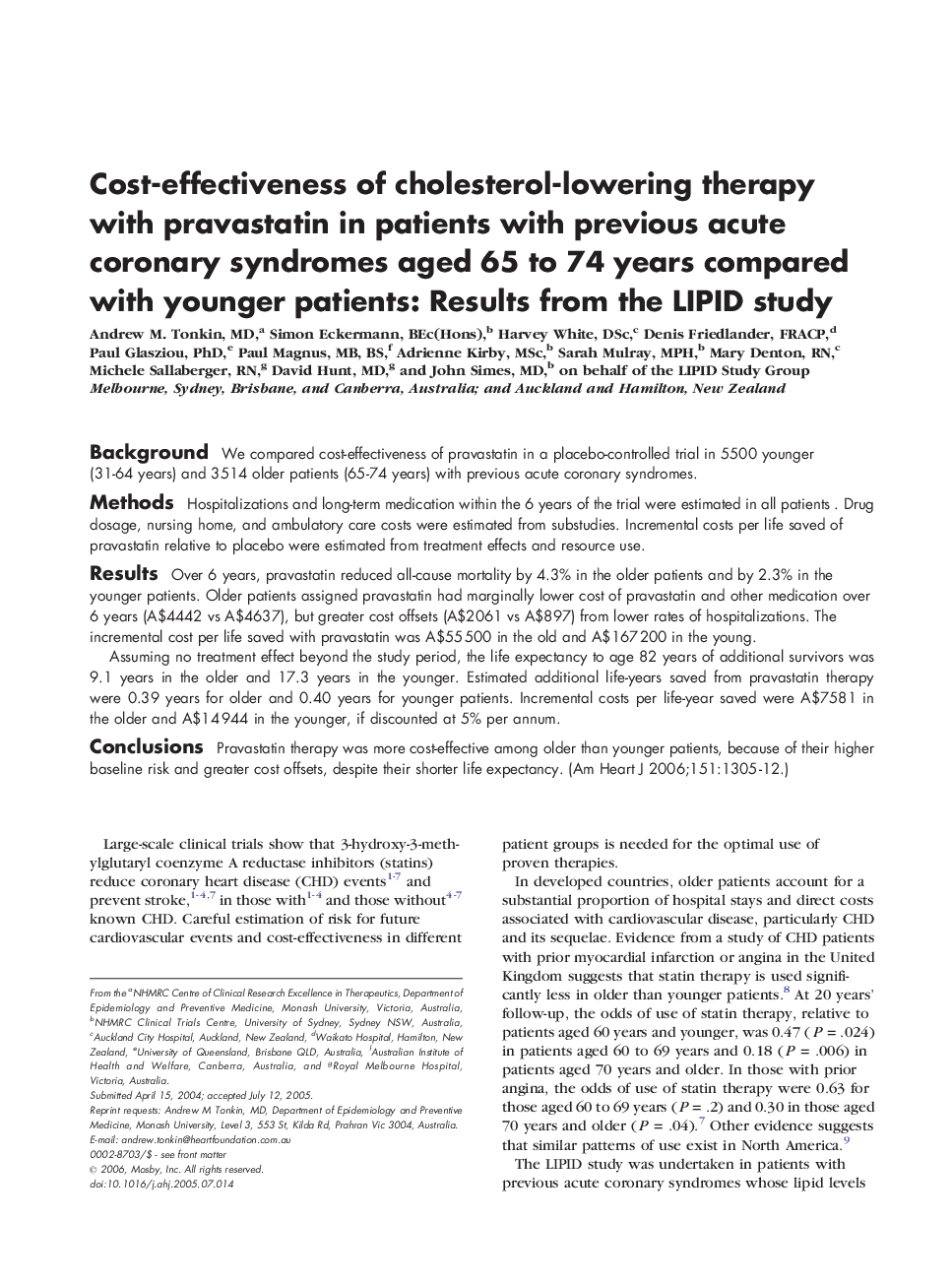| Article ID | Journal | Published Year | Pages | File Type |
|---|---|---|---|---|
| 2851992 | American Heart Journal | 2006 | 8 Pages |
BackgroundWe compared cost-effectiveness of pravastatin in a placebo-controlled trial in 5500 younger (31-64 years) and 3514 older patients (65-74 years) with previous acute coronary syndromes.MethodsHospitalizations and long-term medication within the 6 years of the trial were estimated in all patients . Drug dosage, nursing home, and ambulatory care costs were estimated from substudies. Incremental costs per life saved of pravastatin relative to placebo were estimated from treatment effects and resource use.ResultsOver 6 years, pravastatin reduced all-cause mortality by 4.3% in the older patients and by 2.3% in the younger patients. Older patients assigned pravastatin had marginally lower cost of pravastatin and other medication over 6 years (A$4442 vs A$4637), but greater cost offsets (A$2061 vs A$897) from lower rates of hospitalizations. The incremental cost per life saved with pravastatin was A$55 500 in the old and A$167 200 in the young.Assuming no treatment effect beyond the study period, the life expectancy to age 82 years of additional survivors was 9.1 years in the older and 17.3 years in the younger. Estimated additional life-years saved from pravastatin therapy were 0.39 years for older and 0.40 years for younger patients. Incremental costs per life-year saved were A$7581 in the older and A$14 944 in the younger, if discounted at 5% per annum.ConclusionsPravastatin therapy was more cost-effective among older than younger patients, because of their higher baseline risk and greater cost offsets, despite their shorter life expectancy.
